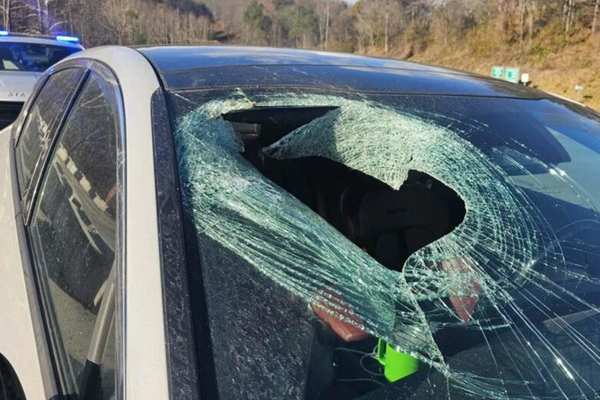Chinese and American agencies recently worked together to manoeuvre their satellites and prevent them from colliding with each other in a rare instance of collaboration to manage space traffic.
“We had a bit of a celebration because, for the first time, the Chinese National Space Agency reached out to us and said, 'We see a conjunction amongst our satellites. We recommend you hold still. We'll do the manoeuvre.' And that's the first time that's ever happened,” Alvin Drew, director for Nasa’s space sustainability programme, said at the International Astronautical Congress in Sydney.
China and the US have been putting a strikingly high number of satellites into orbit around the Earth in the form of megaconstellations, increasing the odds of collision.
An estimated 200,000 objects sized 1cm to 10cm and tens of thousands of objects larger than 10cm crowd the low-Earth orbit occupied by satellites.
As many as 8,500 of the 12,955 active satellites in low-Earth orbit, just over 66 per cent, form the Starlink constellation ofSpaceX.
SpaceX chief Elon Musk said that he hoped to build the Starlink constellation to over 42,000 satellites eventually, with the company currently having permission to launch 12,000.
China recently announced a plan to have over 10,000 satellites orbiting the Earth by the 2030s.
In spite of growing space traffic and the urgent need to manage it, collaboration between Chinese and American space agencies remains rare.
The 2011 Wolf Amendment restricts Nasa from using federal money to cooperate bilaterally with China or any Chinese company unless the US Congress specifically approves it.
In the meantime, the risk of various government-owned probes colliding with each other, and with space debris from previous launches, grows by the day, threatening even astronauts.
Three astronauts were stranded on China’s Tiangong space station this week after their return capsule was struck by suspected space junk.
Researchers also warn that astronomy is facing a growing threat from satellites in low orbit.
“As the satellites overfly the observatories, they block the views of remote objects and phenomena, leaving obliterating white streaks on the collected imagery, and obscuring access to troves of vital data from distant sources of cosmic light and radio waves,” said legal expert David Koplow.
As tens of thousands of new satellites and associated mission debris are catapulted into the Earth’s orbit, he wrote in the Vanderbilt Journal of Transnational Law, “the dangers of congestion, collisions, and interference will soar accordingly”.
Chinese astronauts figure out how to barbecue in space
Astronauts stranded in space after return capsule struck by mystery object
Scientists detect the biggest black hole flare ever seen
Cause of strange bright object spotted in Irish sky revealed
More than 20 states will have chance to see northern lights tonight
The universe isn’t behaving like we thought it was, scientists say







